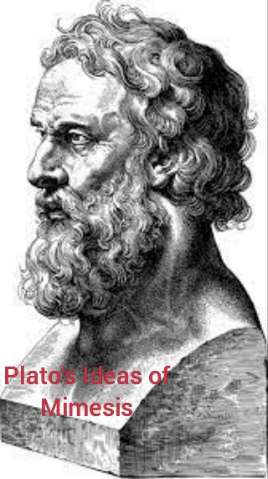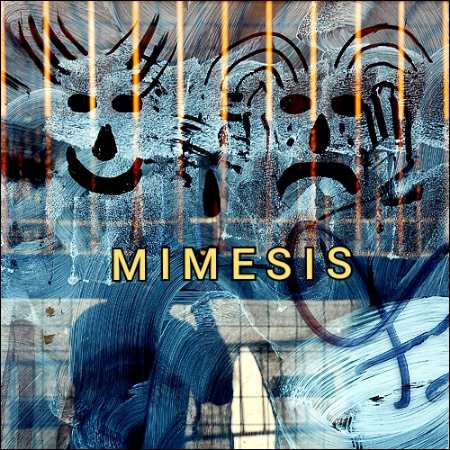What is Mimesis, Plato’s Ideas of Mimesis, Difference of Plato’s and Aristotle’s Ideas of Mimesis
■ What is Mimesis:
In early Greek views of poets and poetry, the word Mimesis occupied an important position. In general, the noun Mimesis as well as the corresponding verb Mimeisthai designated the reenactment, through retual of the event of myths.
Mimesis is a popular term used in philosophy and literature. It suggests the process of imitation or mimicry by which the artists try to express their arts in literature. The word Mimesis was originated from the ancient Greek word meaning imitation or representation in general. But the word Mimesis had been made popular by Plato and Aristotle who used this literary device in their arts and literature.
■ Types of Mimesis:
Mimesis plays a dominant role in poetry. It helps the readers or listeners to identify themselves with the literary creations and follow a trends of literary imitation or representation.
There are two types of Mimesis used in literature.
●Vocal Mimesis – that follows a particular speech pattern which suited to character
● Behavioral Mimesis – that follows a scenario in which the characters respond.
■Plato’s Concept of Poetry as Imitation or Mimesis:
In Laws, Plato’s theme is that poetry is imitation and for that reason, a poet has essentially an important role in education, provided that it is controlled by the ‘Guardians’. However, in the early dialogues, though Plato presents poetry as imitation, it is not conceived of as a merely mechanical snap sort of life. But the transition between this earlier and later Platonic view of Mimesis or imitation can be most clearly led out in the Republic.

■Plato’s Ideas of Mimesis in The Republic:
In book – II and III, Plato discusses ‘Training of Guardians’, the ruling class of the Republic. In this training, poetry plays a considerable role. Plato gives an analysis of the manner in which a poet says what he has to say. Plato then distinguishes three kinds of poetry – poetry of imitation or impersonality, poetry of narration and that of the mixture of the two.
However, it is clear that in Book – III, Plato means by mimetic poetry; poetry that is dramatic or the poetry of representation, according to Cornford’s translation. Plato images the value of Mimesis not only by appealing to the worth of what is imitated but also in terms of the worth of the activity of imitation itself – interns of the effect of its use on the character of the user.
But Plato widens the scope of Mimesis when he comes to Book X of the Republic where imitation is presented as the main function of every kind of poet. Plato’s fundamental criticism of poetic imitation and thus of poetry as such that poets see imitation as good in itself, as a process of knowledge and understanding, regardless of what is imitated.
■ Difference between Plato and Aristotle on the theory of Mimesis
Plato asserts on poetic truth in his theory of Mimesis prompted Aristotle to find find criteria which will do justice to poetry’s intrinsic nature and value. Aristotle’s observation on this theme centred around the concept inherited from Plato’s Mimesis, essential to poetry. Aristotle suggests some important specifications which cut across Plato’s ideas of Mimesis. Since the poet is mimetic artist like a painter or any other image maker, he must use Mimesis to poetry in any particular instance, one of the three objects: “things such as men say and believe that they are; or things such as they ought to be”.
Aristotle’s portion has an affinity with Plato’s in that he accepts the idea that all art offer images of possible reality; but at the same time it is remote from Platonic Mimesis in spirit, since the qualification expressed by Aristotle’s theory of the objects of imitation involves a crucial relaxation of the demand put forward in Book X of the Republic.
While sharing the ideas of Plato’s Mimesis, what might be loosely termed a correspondence theory of Mimesis, Aristotle circumvents the implication of Plato’s view of art by holding that the content and meaning of the Mimetic works can not be justifiably tested against any fixed criterion of truth and reality. Needless to say, it is Aristotle’s view of Mimesis as an essentially creative activity which is closer to later aesthetic theory.
■ Conclusion:
To Aristotle Mimesis or imitation is the recreation of the original giving delight. To him poets are entertainer and teachers. But to Plato, poets and artists must be soul teachers and not entertainer. Since they are not poets are banned from his Republic.
You May Like To Read More:
